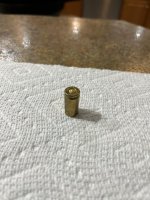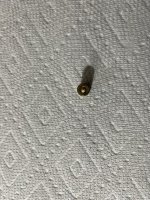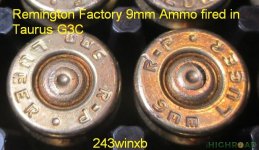Miracle Man
US Veteran
Ok reloaders and/or pistol smiths. Have a couple questions for you?
So a buddy of mine recently gave me 2 or 300 mostly 9mm range pickup brass, have to sort out the 380, He doesn't reload. Just got done decapping them and they're in the wet tumbler.
While I was decapping them I noticed this one brand of brass was giving me a good bit more resistance than all the rest. Headstamp is S&B 9x19 20. I'm assuming Sellier & Bellot made in 2020?
Anyways, after 2 or 3 like that I got to looking closer and the primers on every one of them are the same. They're cratered very badly. The basically entire primer is hooved up like a volcano and the firing pin strike is almost flattened all the way out. The empty cases will not sit flush on a table.
So are cratered primers/badly deformed fired primers a sign of high pressure like they are in rifle cases? Could they just have been fired in a gun with suspect head space? Is S&B ammo junk?
I'm mainly asking because I noticed a couple of my 357 mag relaods with Blue dot powder few days ago had some cratered primers.
Thanks
So a buddy of mine recently gave me 2 or 300 mostly 9mm range pickup brass, have to sort out the 380, He doesn't reload. Just got done decapping them and they're in the wet tumbler.
While I was decapping them I noticed this one brand of brass was giving me a good bit more resistance than all the rest. Headstamp is S&B 9x19 20. I'm assuming Sellier & Bellot made in 2020?
Anyways, after 2 or 3 like that I got to looking closer and the primers on every one of them are the same. They're cratered very badly. The basically entire primer is hooved up like a volcano and the firing pin strike is almost flattened all the way out. The empty cases will not sit flush on a table.
So are cratered primers/badly deformed fired primers a sign of high pressure like they are in rifle cases? Could they just have been fired in a gun with suspect head space? Is S&B ammo junk?
I'm mainly asking because I noticed a couple of my 357 mag relaods with Blue dot powder few days ago had some cratered primers.
Thanks




